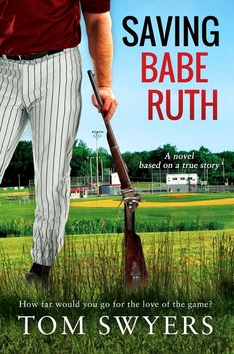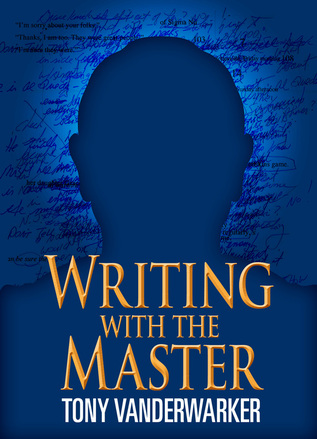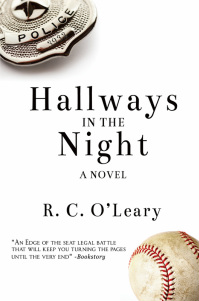As summer begins to wind down and Pennant races begin to tighten up in preparation for the Fall Classic, author Tom Swyers' debuts with a novel that is truly one of a kind. Saving Babe Ruth is a truly original story that possesses many great elements of story telling.
One of the things that makes Saving Babe Ruth an excellent read is its unpredictability. While I will admit to having had a pretty good sense of how the book would end, I was never exactly sure how Swyers would get there. To use a baseball analogy, Swyers throws plenty of curveballs throughout the book which will keep you guessing throughout the story.
This is a book with enough elements that it's hard to fit it into a single category. While Saving Babe Ruth is definitely, at its heart, a baseball book, it's also a fictionalized memoir and has enough action and suspense that I could make the case it is somewhat of a sports thriller, too.
One of the things that makes Saving Babe Ruth an excellent read is its unpredictability. While I will admit to having had a pretty good sense of how the book would end, I was never exactly sure how Swyers would get there. To use a baseball analogy, Swyers throws plenty of curveballs throughout the book which will keep you guessing throughout the story.
This is a book with enough elements that it's hard to fit it into a single category. While Saving Babe Ruth is definitely, at its heart, a baseball book, it's also a fictionalized memoir and has enough action and suspense that I could make the case it is somewhat of a sports thriller, too.
Saving Babe Ruth tells the story of how its protagonist, David Thompson, a lawyer in upstate New York, tries to save his local Babe Ruth league from being ruined by parents and promoters who stand to benefit (both monetarily and egotistically) by attempting to "professionalize" youth sports.
The book is completely relevant in an era when kids' sports have, at best, been tainted and at worst, almost ruined, by parents who want to live vicariously through the athletic accomplishments of their kids, and the "promoters" who exploit these delusions of grandeur through the continuing creation and proliferation of "travel" "elite" and "All-Star teams." Anyone who has a kid playing in a youth sports league will recognize several of the characters that Swyers creates.
One of the refreshing parts of this book is the way Swyers so clearly delineates between good guys and bad guys. At a time when the line between amateur sports and sports as a business has become as blurry as a batter's box chalk line in the 9th inning of a game, it's nice to spend time rooting for a character with intentions that are completely noble....even if you're not sure if he might decide that his noble ends may justify some questionable means.
In writing this story, Swyers could have easily written a book that was predictable and preachy. But he does not. Instead, he wrote a book with some of the most realistic characters you will come across. As a matter of fact, one of the things I liked best about this book was how real the characters seemed to me. This could likely be due to the fact that the book is, as Swyers discussed in a recent interview on the Guy Who Reviews Sports Books' blog, somewhat auto-biographical. Hence the reason I think it can be categorized as a fictionalized memoir.
In addition to writing a book with a wide cast of characters who are both real and relatable, Swyers did something I found to be very impressive. He created, at least in my mind, a very strong sense of uncertainty in how the book will eventually turn out through his opening scene in which Thompson fires a shotgun at his nemesis, Rob Barkus.
David's reckless act as the book opens made me wonder throughout what the overall arc of the story would be. Will David actually crack and will the final outcome be decided with someone looking into the barrel of a shotgun? Are we dealing with a happy ending or are things going to turn out very bad for some people? As a matter of fact, the opening scene was so original and unexpected that I had a nagging sense of uncertainty throughout the book. It was one of the reasons I kept wanting to turn the pages.
As the story progresses, it builds up to a final confrontation, a battle so to speak, that is completely original and one that would translate well onto the big screen. By the time Swyers reaches this point of the book, I was fully invested in the characters which made this scene even more satisfying. There are a lot of well written scenes in Saving Babe Ruth, but this scene, in particular, gave me a true sense of almost being there in person.
If you're looking for a book to read that has colorful characters, a strong plot-line, and a sense of unpredictability from page one, do yourself a favor and make some time to read Swyers' book. Available on Amazon in both kindle and paperback.
The book is completely relevant in an era when kids' sports have, at best, been tainted and at worst, almost ruined, by parents who want to live vicariously through the athletic accomplishments of their kids, and the "promoters" who exploit these delusions of grandeur through the continuing creation and proliferation of "travel" "elite" and "All-Star teams." Anyone who has a kid playing in a youth sports league will recognize several of the characters that Swyers creates.
One of the refreshing parts of this book is the way Swyers so clearly delineates between good guys and bad guys. At a time when the line between amateur sports and sports as a business has become as blurry as a batter's box chalk line in the 9th inning of a game, it's nice to spend time rooting for a character with intentions that are completely noble....even if you're not sure if he might decide that his noble ends may justify some questionable means.
In writing this story, Swyers could have easily written a book that was predictable and preachy. But he does not. Instead, he wrote a book with some of the most realistic characters you will come across. As a matter of fact, one of the things I liked best about this book was how real the characters seemed to me. This could likely be due to the fact that the book is, as Swyers discussed in a recent interview on the Guy Who Reviews Sports Books' blog, somewhat auto-biographical. Hence the reason I think it can be categorized as a fictionalized memoir.
In addition to writing a book with a wide cast of characters who are both real and relatable, Swyers did something I found to be very impressive. He created, at least in my mind, a very strong sense of uncertainty in how the book will eventually turn out through his opening scene in which Thompson fires a shotgun at his nemesis, Rob Barkus.
David's reckless act as the book opens made me wonder throughout what the overall arc of the story would be. Will David actually crack and will the final outcome be decided with someone looking into the barrel of a shotgun? Are we dealing with a happy ending or are things going to turn out very bad for some people? As a matter of fact, the opening scene was so original and unexpected that I had a nagging sense of uncertainty throughout the book. It was one of the reasons I kept wanting to turn the pages.
As the story progresses, it builds up to a final confrontation, a battle so to speak, that is completely original and one that would translate well onto the big screen. By the time Swyers reaches this point of the book, I was fully invested in the characters which made this scene even more satisfying. There are a lot of well written scenes in Saving Babe Ruth, but this scene, in particular, gave me a true sense of almost being there in person.
If you're looking for a book to read that has colorful characters, a strong plot-line, and a sense of unpredictability from page one, do yourself a favor and make some time to read Swyers' book. Available on Amazon in both kindle and paperback.




 RSS Feed
RSS Feed